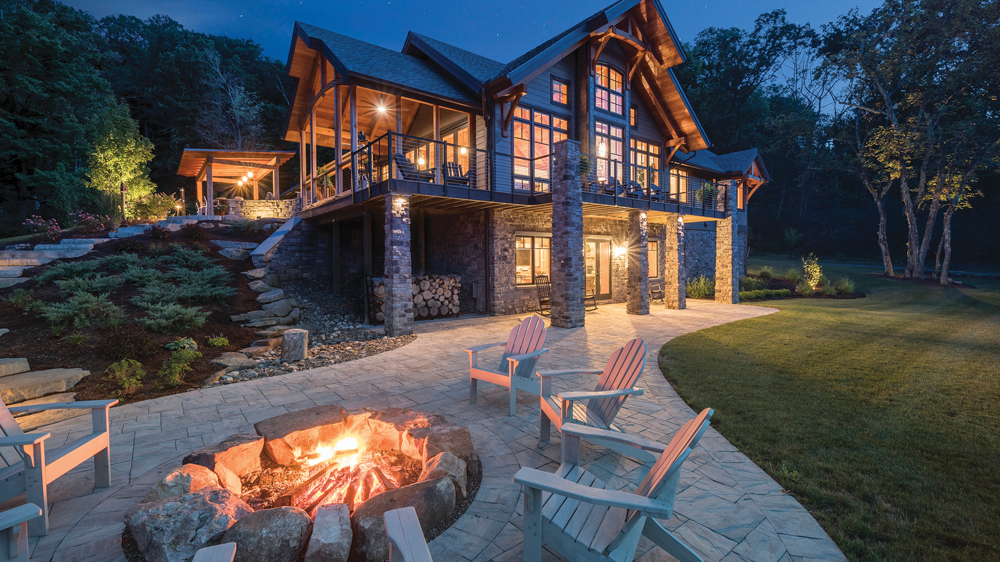
You’ve dedicated a lot of time and energy to identifying how you want your timber home to look and flow. You’ve jotted down must-haves and nice-to-haves on a wish list. But have you thought of everything? Before finalizing your timber frame house plan, tweak the layout with these design solutions, and watch your timber home go from good to great.
1. Let the sunshine in.
In four-season climates, a south-facing timber home will take advantage of passive solar heat gain, reducing your winter heating bill.
2. Add window drama.
Not every window in your timber house has to be the same size and shape. A transom over a standard-size window will give it additional height, and a round or triangular window tucked within a gable will heap on the charm.
3. Enclose a porch.
Sheltered exterior spaces allow you to enjoy the great outdoors even in bad weather. A simple screen will keep summer heat, bugs and rain at bay, but an enclosed sunroom will extend your enjoyment far beyond fair-weather months.
4. Build up, not out.
As a general rule, adding square footage by means of a second floor is less expensive than a sprawling, single-story timber house that can eat away at your budget, thanks to excavation and foundation-pouring expenses.
5. Keep the bedroom cozy.
A master bedroom is one of the most private spaces in your timber home, so avoid soaring cathedral ceilings and oversized designs. Save the drama for the great room.
6. Give ample clearance.
A staircase should be located far enough from the front door so there’s a minimum of 5 to 8 feet of clearance when the door is open. If there isn’t enough room, a large group of arriving or departing visitors will be uncomfortably wedged into the space.
7. Consolidate dining areas.
“Most people have too many eating areas,” according to architect Mira Jean Steinbrecher. “At least two-thirds of the time, most of these areas go unused.” Instead of a formal dining room, breakfast nook and island bar, consolidate your eating spaces into one comfortable room.
8. Don’t skimp on storage.
Closet space is crucial. Even secondary bedrooms should have between 6 and 7 feet of closet space—not only for clothes, but also for storing items you access often. If your timber home doesn’t have vaulted ceilings, convert the area in the rafters to attic space. The trusses above a garage are good for storage, too.
9. Think outside, literally.
Decks and covered porches can add hundreds of square feet of living space. Balconies off of bedrooms also extend square footage and enhance your timber home’s curb appeal.
10. Expand the laundry room.
Professional guidance and recommendations are crucial throughout the entire timber frame construction process. But, remember, this is your timber home, so make sure you discuss every suggestion thoroughly, and don’t be afraid to get a second opinion if you have concerns. Also, you want to work with someone who’s excited about your timber frame plan and not trying to make a statement of his own, or worse, make his job easier.
11. Play with fire.
Be smart when locating your fireplace. Position it in harmony with your view, not in competition with it. Consider a double- or multisided hearth so you can enjoy the crackle of a fire from several rooms without the expense of multiple fireplaces.
12. Plan ahead.
Think about how you might use your timber home in a decade or two. Plan for a day when stairs become a challenge, and design a first-floor master bedroom. Or if you have a young family, plan for the teen years by devising a space where kids can have some privacy, such as an unfinished basement. Install wiring and plumbing rough-ins now so that finishing the basement in the future will be a snap.





